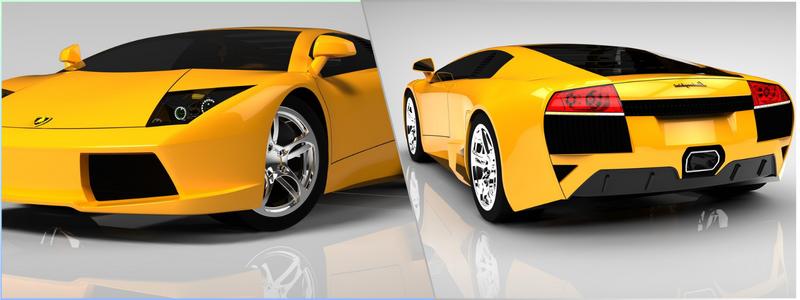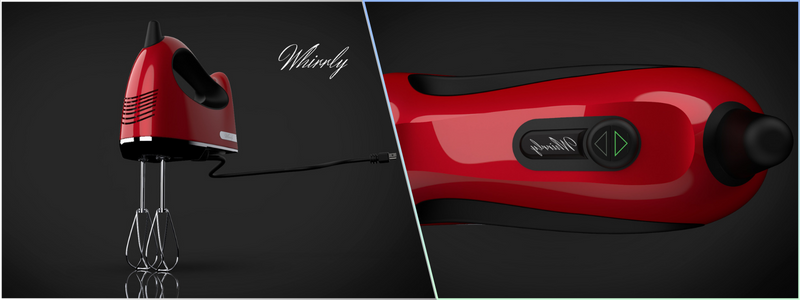In this article, we’re discussing the product invention process and six new product prototyping used for businesses. No design process will ever be complete without creating product prototypes. As an indispensable and critical part of any design process, prototypes are like the green light that signals the production and success of a product. New product prototyping services involve confirmation, validation, authentication, and demonstration. With the help of a well-thought-out prototype, a theoretical idea can become a more feasible working system that you can quickly test or evaluate.
It doesn’t matter if your new product idea is an innovative kitchen appliance or a new beauty tool. A prototype can help you present and display your product to future buyers and investors so they can determine if your product is worth their interest, time, and money. During the product invention process, businesses often use six types of new product prototyping methods. Continue reading to learn more about these different prototyping types and product prototyping in general.
 Table of Contents
Table of Contents
RELATED: Different kinds of prototypes and how to use them for your design project
What is product prototyping?
Product prototyping is an early sample or preview of a new idea or product you hope to develop, invest in, and reproduce in large quantities in the long run. Whenever there’s a new investment opportunity, you investigate how to tangibly and understandably communicate this idea to potential investors. Explaining the investment opportunity is vital before jumping into mass production and putting your capital at risk. Prototypes are an essential aspect used by most industries. Prototyping sets the groundwork to validate concept design and test the product itself.
Engineers, architects, product design firms, app developers, filmmakers, and other professionals count on prototypes to attract investors and simulate their products. At its core, a prototype is the rapid replica of an original idea or product. A prototype can help acquire financing investment, support your crowdfunding campaign, or kick off the entire design process. After prototyping a new product, you can refine or modify it to accommodate the audience’s demands or improve the function further.
RELATED: How to reduce painful product development costs for your company
What is the main purpose of product prototyping?
Based on the definition of product prototyping, its primary purpose is to provide an actual working product sample that can be evaluated and tested for efficacy and errors, something that you won’t be able to do with a merely theoretical idea. Product prototyping models serve as a guide for product design experts to help others visualize and manufacture the actual product.
What’s included in new product prototyping?
As an integral part of the earlier stages of investment, new product modeling services prototypes typically include the main features and aspects of the original idea. Considering how the original idea is the precursor of the manufacturing process, prototypes can often have the product’s packaging, specific color, navigational elements, or online visuals. Allocate adequate effort and time to make it a reliable and workable sample. The important part of prototyping is to include everything to help a potential investor or business make an informed decision.
RELATED: How to design the best prototype for your new product
If the prototype doesn’t deliver adequate results, this will serve as a testament to the abilities of the original product. Product prototypes can be rough and quick. Product prototyping doesn’t look to look exactly like the final version. It doesn’t need to be perfect either because it can be useful during the product’s early evaluation and when the design process starts. Developing a hardware product prototype is an essential element in the design lifecycle of any product.
Prototypes can offer early market feedback on whether the product has the potential to lead a particular segment of the market. It also provides you with an early insight into essential changes in design. Prototypes also help teams lower the risks of product design and development lifecycle phases. When done right, manufacturing prototyping designers can help eliminate design risks to lead to more successful product outcomes. The following are the six types of new product prototyping steps used by businesses that all successful physical product designs need to go through:
RELATED: Advantages of using rapid prototyping services for your business

1. Concept sketch prototyping
Concept sketch prototyping is where the product concept meets its first test. It is when you move the product idea onto paper or a computer. A concept sketch prototype can initially begin with some simple 2D sketches. It can also evolve into a basic geometry computational modeling in 3D. The primary purpose of a concept sketch prototype is to offer quick visual solutions of potential ideas that you can share with other people for feedback. The concept sketch output will be reviewed to develop new solutions and eliminate unnecessary ones.
2. Bench model prototyping
Once you have a concept direction, you can proceed to bench model prototyping. This prototyping method can take on different forms, such as custom-built mechanisms, foam mockups, and virtual test models. Your specific variations largely depend on what you need or want to test.
Bench model prototypes aim to get answers as quickly as possible before the design implementation. Prototype professionals create several bench model prototypes depending on the specific project. They do it to de-risk complicated mechanisms, test ergonomic form features, evaluate technology, and receive immediate user feedback. Any acquired input is valuable as it will help validate the design direction and speed up the product development process.
RELATED: 6 Reasons you need to prototype your new product design
3. Fully functional rapid prototyping
Fully functional rapid prototyping is when the final production solution takes form. Every proposed design feature is prototyped, which includes the basic user interface, electronics integration, and structural components. It results in developing a physical model matching the final product’s interaction, function, and size.
Testing and verification of the fully functional physical product is the main purpose of this particular type of prototype. Prototype developers use various rapid prototyping methods to develop fully functional models. The most common methods include 3D printing design, CNC machining, and SLA for physical models, as well as off-the-shelf or OTS and open-source platform evaluation board configurations.
4. Visual model prototyping
Visual model prototyping helps you represent production-intent product options for form, material, and color. This prototype model can be helpful in early marketing purposes such as video shoots, crowdfunding, or product packaging concept design services.
RELATED: 3D Printing technologies for modeling and prototyping
Visual model prototyping aims to showcase the final product’s form, material, and look. Most of the time, a visual model prototype only allows for minimally functional and controlled demonstration features. It can also be completely non-functional. A less functional prototype reduces the investment of time and money to achieve the expected results of matching the final product’s look.

5. Pre-production’ alpha’ full prototyping
The pre-production ‘alpha’ full prototyping is a single device developed using rapid prototype techniques or rapid prototyping services. The physical parts are cast, CNC machined, or 3D printed using the production intent geometry. Parts that cannot be rapidly prototyped because of supplier, material, or manufacturing complexities may require production processes. For instance, electronics designers develop electronic products and printed circuit boards (PCB) in low volume using production processes to evaluate layout, schematic, and surface component assembly.
Custom firmware will be ready for the initial testing and upload procedures. It includes essential function software features, while secondary features can be implemented later. The key purpose of a pre-production prototype is to verify and validate the product’s production process, function, and appearance. It can also come in handy for user testing, such as the clinical trials of medical devices.
RELATED: Guide to new electronics prototyping for hardware startups & design companies
6. Manufacture phase production prototyping
Manufacture phase production prototyping is the last prototype developed before the start of volume production. Every component of a specific product is assembled using the parts from mass-production methodologies and techniques. The final assembled products will be tested in line to guarantee and confirm that the critical features function properly.
The manufacture phase prototype is the final validation check before mass production of the product. The initial off-the-line products will be user-tested under real-world applications in the field. Select customers provide feedback about the reliability and functional effectiveness of the product. The product assembly process is also optimized and evaluated during this stage with the help of the QC or quality control guideline procedure. Once you finish testing and completing this final prototype, your new product will be ready for the next step, mass production, followed by being introduced in the market.
How Cad Crowd can help
Cad Crowd can connect you with qualified 3D designers to create your prototype. Or if you’re looking for some other type of service, check out this comprehensive list of our offerings. Contact us for a free quote.
